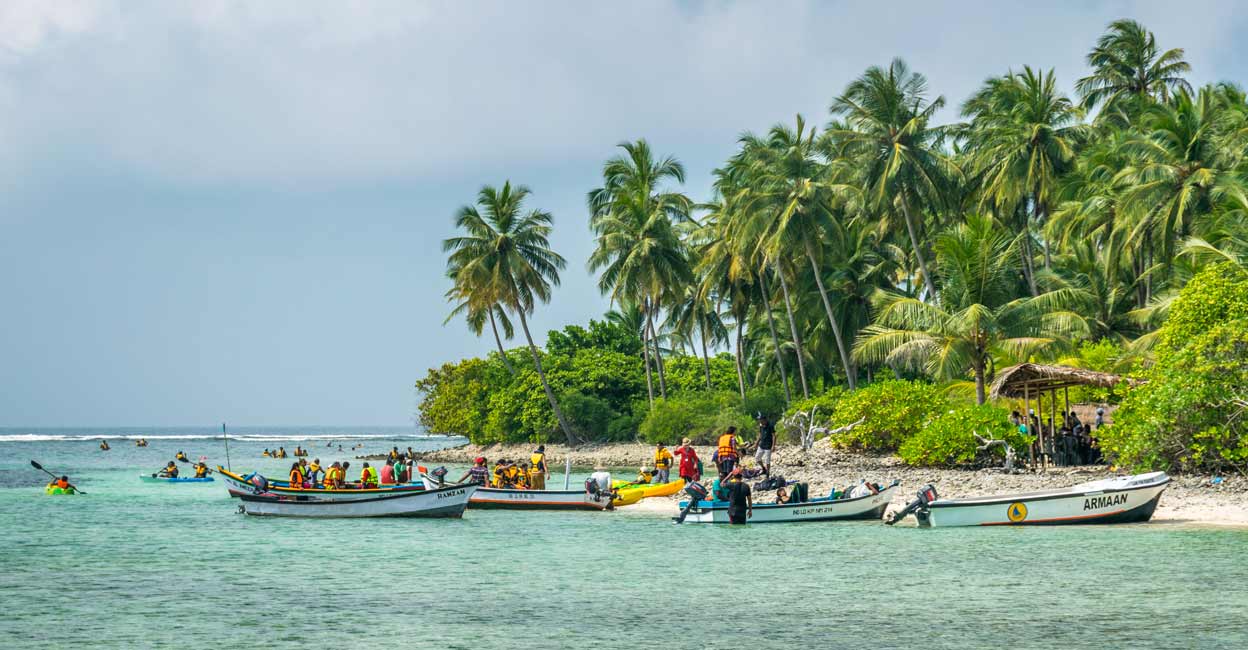Why India's Lakshadweep Wildly Remote Island Is Trending
Nestled in the heart of the Arabian Sea, The picturesque archipelago of why India Lakshadweep is trending in the travel circuit, captivating the imagination of Indian tourists and global adventurers alike.
Jane RestureFeb 20, 20241708 Shares24759 Views

Nestled in the heart of the Arabian Sea, The picturesque archipelago of why India Lakshadweep is trendingin the travelcircuit, captivating the imagination of Indian tourists and global adventurers alike.
The surge in interest follows Prime Minister Narendra Modi's visit to the islands in January 2024, where he shared stunning images of the pristine white beaches and crystal-clear waters on social media platforms, garnering widespread attention.
Modi's endorsement triggered an unprecedented wave of curiosity, with Google searches for "Lakshadweep" reaching a two-decade high, according to The Economic Times. Travel enthusiasts flocked to mainstream media outlets, exploring articles and devouring captivating YouTube videos and Instagram reels showcasing the archipelago's natural beauty. MakeMyTrip reported an astounding 3,400% increasein platform searches for Lakshadweep after the Prime Minister's visit.
Lakshadweep's Society for Promotion of Nature Tourism and Sports (SPORTS), responsible for handling tourism in the region, has witnessed an unprecedented surge in inquiries. Abdul Samad, one of SPORTS' water sports instructors, noted a dramatic increase from one or two tourist inquiries a day to at least 10 a day since last month. Cordelia Cruises, sailing to Lakshadweep since September 2021, reported a staggering 2,500% surge in booking queries post-Modi's visit.
The surge in interest has prompted plans for new beach and water villas on the islands of Suheli and Kadmat. In her budget speech on February 1, India's finance minister Neermala Sitharaman emphasized enhancing connectivity to India's islands to promote tourism, further underscoring Lakshadweep's newfound prominence.
Comprising 36 islands, including 12 atolls, three reefs, and five submerged banks, Lakshadweep is a unique destination with a population of around 70,000, primarily dependent on fishing and coconut cultivation. The islands, rising just above sea level, are the only atolls in India, formed from ancient volcanoes that gradually sank, leaving behind a stunning coral reef.
Despite its breathtaking allure, Lakshadweep faces environmental challenges. The Lakshadweep Research Collective highlights the impact of climate change, including coastal erosion and the loss of an entire island in 2017. Scientists, including Vardhan Patankar, conservation director of GVI, warn that increased tourism could expedite the islands' submergence by 2050.
To mitigate potential ecological threats, SPORTS plans to regulate tourist numbers through a permit system and encourages cruise ships and yachts to visit without overnight stays. However, concerns persist about potential damage to the delicate coral reef and increased industrial fishing.
In the face of these challenges, travelers are urged to adopt eco-friendly practices. Lakshadweep offers low-impact activities such as snorkeling, scuba diving, and night fishing, providing unique experiences while minimizing environmental impact. Homestays run by locals offer comfortable accommodations, with initiatives like Landiago ensuring direct contributions to the local economy.
Final Thoughts
While India's Lakshadweep gains popularity as a tourist haven, striking a delicate balance between promoting its allure and practicing sustainable conservation is crucial. Prime Minister Modi's endorsement has spurred increased interest, emphasizing the need for responsible tourism.
As travelers embark on adventures in this island paradise, a shared responsibility emerges to tread lightly, embrace eco-friendly practices, and collaborate with locals for a harmonious coexistence between tourism and conservation in this captivating gem of the Arabian Sea.
Jump to
Latest Articles
Popular Articles